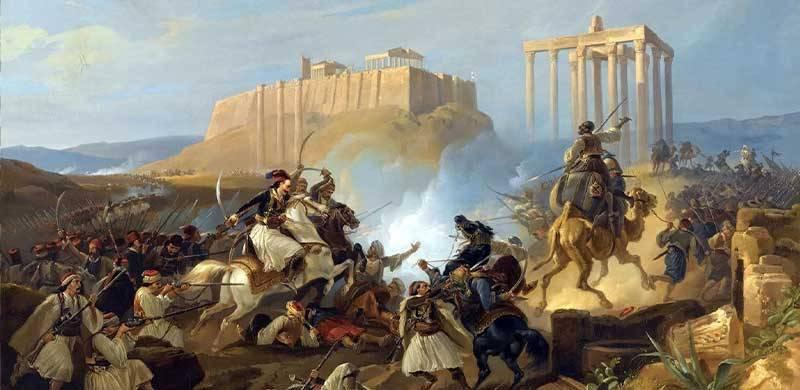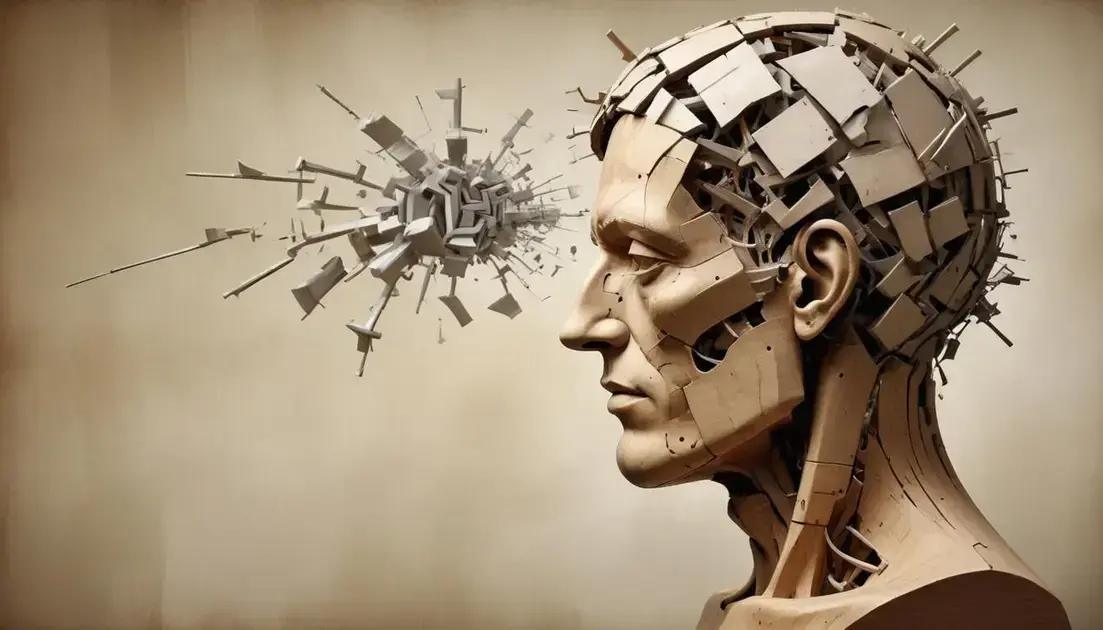
The Evolution of Warfare: From the Ancient World to Modern Conflicts
The history of warfare is a vast and complex tapestry woven from thousands of years of human conflict. Civilizations have risen and fallen, leaving behind legacies of military innovation, strategic brilliance, and devastating brutality. From the clash of swords and shields in antiquity to the deployment of drones and cyberattacks in the modern era, the evolution of warfare reflects technological progress, shifting societal values, and the constant adaptation of tactics and strategies. This exploration delves into the major advancements in warfare, charting its course from ancient battlefields to the complexities of contemporary conflicts.
I. Ancient Warfare: The Dawn of Organized Conflict
The earliest forms of warfare, though undocumented in detail, likely emerged alongside the development of settled agricultural societies. Competition for resources, territorial disputes, and the establishment of dominance fueled the initial conflicts. Evidence suggests that organized violence, albeit rudimentary compared to later iterations, was present in the Neolithic period. The precise origins are difficult to pinpoint due to the limitations of archaeological evidence, but the emergence of sophisticated tools and social structures paved the way for more organized conflict.
Mesopotamia and Egypt: Among the earliest documented instances of warfare are those found in the ancient civilizations of Mesopotamia and Egypt. These societies developed sophisticated military organizations, employing infantry armed with spears, swords, and bows and arrows. The use of chariots, initially as a status symbol for elite warriors, evolved into a significant military asset, allowing for swift maneuvers and breakthroughs on the battlefield. These early wars were often fought over fertile land, water rights, and trade routes, demonstrating the inextricable link between resources and conflict throughout history. The development of writing systems allowed for the recording of these conflicts, offering invaluable, albeit often biased, accounts of early warfare.
The Greek World and the Rise of Tactics: The ancient Greek world witnessed a significant leap in military organization and tactical sophistication. The hoplite phalanx, a tightly packed formation of heavily armed infantry, represented a revolutionary approach to warfare. The disciplined coordination and mutual support provided by the phalanx, with its overlapping shields and spears, proved highly effective against less organized armies. The Spartans, renowned for their military prowess, perfected this formation, achieving significant victories through superior training and discipline. Naval warfare also played a crucial role in the Greek world, with the Athenians establishing naval dominance and employing effective naval strategies. The Peloponnesian War between Athens and Sparta demonstrates the strategic implications of both land and sea power. Simultaneously, the rise of prominent military thinkers like Sun Tzu in China and Kautilya in India further contributed to the evolution of strategic thought. Their writings emphasize the importance of deception, intelligence gathering, logistics, and political considerations in achieving victory, principles that remain relevant today.
The Roman Empire: Conquest and Engineering: The Roman Empire inherited and improved upon many of the military innovations of the Greeks. The Roman army was renowned for its organization, discipline, and logistical efficiency. The Romans refined the phalanx formation, further developing the testudo, or “tortoise” formation, a defensive tactic that provided exceptional protection against missile fire. Their engineering prowess, particularly in the construction of roads, bridges, and fortifications, significantly enhanced their military capabilities. The Romans’ mastery of siege warfare, employing sophisticated siege engines like catapults and battering rams, allowed them to conquer fortified cities across their vast empire. Their legions were highly adaptable, capable of fighting effectively in diverse terrains and environments. The Roman military system, with its professional legions, standardized training, and sophisticated logistics, influenced military organization for centuries to come. This period also saw the emergence of the concept of military engineering as a crucial aspect of warfare.
II. Medieval Warfare: Knights, Castles, and the Longbow
The fall of the Roman Empire marked a shift in the nature of warfare. Feudalism, with its decentralized power structure, led to a different style of conflict, often characterized by localized struggles and smaller-scale battles. The medieval period saw the rise of the knight, a heavily armored warrior who wielded significant power on the battlefield. The development of plate armor, coupled with lances and swords, created an almost impenetrable defensive system. However, the emergence of the longbow and the crossbow challenged this dominance, providing an effective means to pierce armor from a distance.
Castle Sieges and Fortifications: Castles played a central role in medieval warfare. These fortified structures, built on strategic locations, served as centers of power and defense. Sieges, prolonged and often brutal campaigns to capture castles, became a defining feature of the period. The development of more sophisticated siege weapons, such as trebuchets, allowed attackers to breach castle walls. Defenders, in turn, adopted new techniques to strengthen their fortifications. The construction and defense of castles became a sophisticated art, reflecting the evolving dynamics of medieval warfare. Simultaneously, the development of organized armies under powerful monarchs eventually led to a move away from feudal warfare based solely on knightly prowess.
The Crusades and Religious Conflict: The Crusades, a series of religious wars between Christians and Muslims, spanned centuries and had a profound impact on medieval warfare. The Crusades witnessed the clash of different military styles and technologies, leading to technological exchange and adaptations. The use of fortifications, siege tactics, and naval power became increasingly important, impacting military strategies in the region for centuries to come. The Crusades also exposed European armies to new military technologies and tactics found in the East.
The Hundred Years’ War: The Rise of Gunpowder: The Hundred Years’ War between England and France marked a significant turning point in medieval warfare. While characterized by traditional battles fought with cavalry and infantry, the conflict also saw the introduction of gunpowder weapons, such as cannons and early firearms. Although initially slow to take effect, these weapons gradually proved impactful, undermining the dominance of armored knights and influencing the development of fortifications. The longbow, used effectively by the English, played a crucial role in several key battles, showcasing its potential to overcome armored defenses. The Hundred Years’ War demonstrated the increasing importance of national identity and professional armies in military campaigns.
III. Early Modern Warfare: Gunpowder and the Rise of Standing Armies
The early modern period saw the widespread adoption of gunpowder weapons, revolutionizing warfare in profound ways. The musket, a handheld firearm, replaced the pike and halberd as the primary infantry weapon, demanding changes in tactics and formations. The development of cannons and artillery played a crucial role in sieges and pitched battles, allowing armies to demolish fortifications from a distance.
The Thirty Years’ War and the Mercenary System: The Thirty Years’ War in Europe demonstrated the devastating impact of early modern warfare. The conflict was characterized by widespread destruction, religious and political conflict, and the prominence of mercenaries. The use of large-scale standing armies, rather than relying solely on feudal levies, became more common. The war also highlighted the increasing complexity of military organization and logistics.
The Napoleonic Wars: Total War and Mass Armies: The Napoleonic Wars signaled a major transformation in warfare. Napoleon’s Grand Army, based on the principle of a large, highly mobile force, fundamentally altered the nature of combat. His innovative tactics, incorporating the combined use of infantry, cavalry, and artillery, proved highly effective. The Napoleonic Wars also showed the rise of nationalism and its impact on warfare, as armies fought not just for their monarch but for their national identity. This period also saw improvements in communications and logistics, enabling faster deployment of troops and supplies. These developments laid the groundwork for the scale and intensity of future conflicts.
IV. Modern Warfare: Industrialization and Total War
The Industrial Revolution profoundly reshaped warfare, leading to the emergence of industrialized armies and total war. The increased capacity for mass production of weapons and munitions allowed for conflicts on a scale previously unimaginable. New technologies like railroads and the telegraph transformed logistics and communication, enabling quicker troop movements and better coordination.
World War I: Trench Warfare and Technological Stalemate: World War I epitomizes the destructive potential of modern warfare. The introduction of machine guns, barbed wire, and trench warfare created a devastating stalemate on the Western Front, resulting in immense casualties and trench warfare. The war also witnessed the emergence of air power, chemical warfare, and tanks. While these innovations promised quicker breakthroughs, they often led to even greater levels of destruction. World War I showcased the devastating impact of total war, where the entire resources of a nation were mobilized for conflict.
World War II: Blitzkrieg and Global Conflict: World War II saw further technological advancements and a more globalized conflict. The blitzkrieg strategy, characterized by rapid, coordinated attacks utilizing tanks and air power, demonstrated the potential for decisive victories. The war also marked the widespread use of radar, jet aircraft, and ultimately, nuclear weapons. The atomic bombings of Hiroshima and Nagasaki signified a horrifying new dimension to warfare, introducing weapons of mass destruction with unprecedented destructive power. The scale and scope of World War II, the involvement of many nations and theaters of war, highlighted the interconnectedness of global politics and the potential for catastrophic conflict.
V. Contemporary Warfare: Asymmetric Conflicts and New Technologies
Contemporary warfare is characterized by several key features, including asymmetric conflicts, the rise of non-state actors, and the proliferation of new technologies. The blurring of lines between war and peace, and the increased role of non-state actors have presented a new set of challenges for military strategists and policymakers.
Asymmetric Warfare and Terrorism: The rise of terrorism and insurgent groups has led to the prevalence of asymmetric warfare, where non-state actors employ unconventional tactics to target stronger adversaries. Guerrilla warfare, terrorism, and the exploitation of civilian populations are common strategies used by non-state actors. This type of conflict demands a different type of response than traditional warfare.
The Role of Technology: Drones and Cyber Warfare: The development of drones and cyber warfare has opened new dimensions in conflict. Drones allow for targeted strikes and surveillance operations, potentially reducing civilian casualties, while also raising ethical considerations. Cyber warfare, the targeting of computer systems and infrastructure, represents a relatively new but rapidly growing dimension of conflict. The vulnerability of critical infrastructure to cyberattacks presents new challenges and risks in the conduct of war.
Future Warfare: The Unfolding Landscape
Predicting the future of warfare is a complex and speculative endeavor. However, several trends appear likely to shape its evolution in the coming years:
Artificial Intelligence (AI) and Robotics: The integration of AI into military systems promises to further automate various aspects of warfare, potentially impacting decision-making, targeting, and the deployment of autonomous weapons systems. The ethical implications of this technology are significant.
Space and Cyber Warfare: The increasing militarization of space and cyberspace presents new domains of conflict. Competition for control of satellites and digital infrastructure will have far-reaching implications for national security and the conduct of warfare.
Information Warfare: The manipulation of information and the spread of disinformation pose significant threats, influencing public opinion, undermining trust, and potentially destabilizing political systems. Countering information warfare will be a major focus for militaries and governments.
Hybrid Warfare: The blending of traditional and unconventional methods, such as cyberattacks combined with propaganda or disinformation campaigns, presents complex challenges for military response.
Climate Change: The impact of climate change could exacerbate existing conflicts, create new sources of tension, and potentially alter the geographic dynamics of warfare.
Conclusion:
The history of warfare is a continuous narrative of innovation, adaptation, and the evolving relationship between technology, society, and conflict. From the organized battles of ancient civilizations to the complexities of modern warfare, the human experience with conflict has been a relentless process of learning, adapting, and seeking dominance. The challenges of contemporary warfare – asymmetric conflicts, cyber warfare, and the ethical considerations of new technologies – demand careful consideration and strategic innovation. Understanding the history of warfare provides invaluable insight into the enduring nature of conflict and its enduring impact on human societies. By analyzing past conflicts and considering emerging technologies, we can hope to develop more effective strategies to prevent war, mitigate its devastating effects, and ultimately strive for a more peaceful and secure future. The study of the history of warfare is not merely an academic pursuit; it is a crucial endeavor for understanding the present and preparing for the future.


